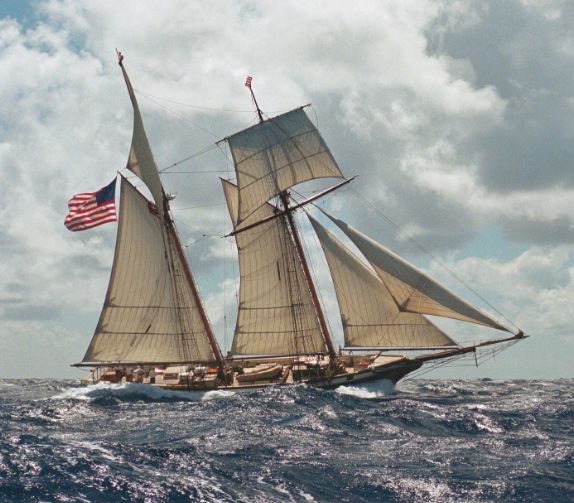Lynx visits Marblehead This Weekend - Free Deck Tours

MARBLEHEAD — Pirates are coming to Marblehead.
But don’t worry. These are patriotic pirates, manning the privateer Lynx under a letter of marque from President James Madison during the War of 1812. Of course, that war ended just about 100 years ago, but don’t tell the Lynx crew. They arrive on Thursday with the tall ship expected to sail ’round Marblehead Neck about 11:30 a.m. On landing, the crew will remain in character as their 19th-century counterparts.
Docking at State Street Landing, on Friday, Saturday and Sunday, they will give free deck tours of the ship and take some on sails twice a day, from 1 to 3 p.m. and 4 to 6 p.m. at a cost of $55, $30 for kids under 12.
This is a return visit for Lynx, which was last here in 2011. It’s more appropriate than ever as the nation continues observing the War of 1812, the conflict that saw the original Lynx in action.
“Marblehead is the birthplace of the American Navy, and the arrival of the Lynx will allow us to continue to celebrate our maritime heritage,” said Deb Payson, executive director of the Marblehead Chamber of Commerce, which sponsored the visit. Harbormaster Webb Russell is also helping to make the visit possible.
The Lynx is based in Portsmouth, New Hampshire, said Don Peacock, 57, president of the nonprofit Lynx Educational Foundation. But it’s been “up and down the East Coast” celebrating the role that such vessels played in America’s battle with a much larger British Navy. The foundation was begun by a group led by Woodson Woods in order “to teach and remind both young and old at every port what life was like in that era,” Peacock said.
While little known today, the War of 1812 gave America the battle cries “Don’t tread on me,” “Free trade and sailor’s rights” and “Don’t give up the ship,” Peacock said. The 14-ton replica Lynx was built in Rockport, Maine, at a cost of $3.5 million in 2001. She carries six carronades, undersized cannons that would have been standard on any privateer. They’re small for a very good reason. “You didn’t want to sink the prize,” Peacock said. The idea was to capture the enemy vessel by bludgeoning it into surrender and sending it back to an American harbor where it would bring a good price.




